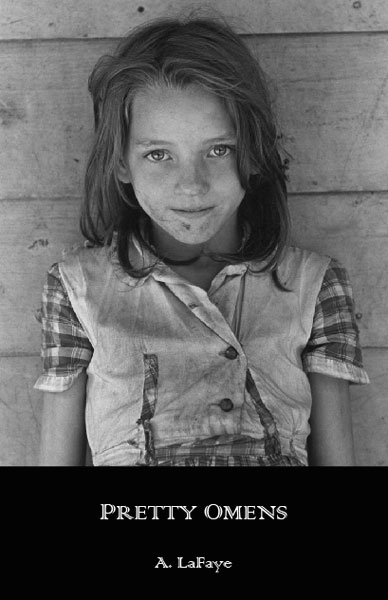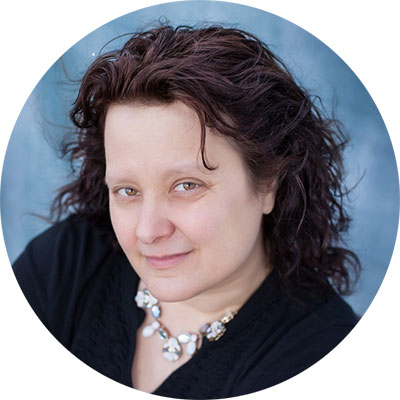I blame boredom and Paul Janeczko for the beginning of Pretty Omens (Anchor & Plume, 2015) a novel-in-verse that is a re-envisioning of the myth of Cassandra set in a Virginia coal mining community in 1911.
Okay, so maybe I should say that it was really my penchant for snooping while I’m waiting for a friend (sorry) and the fact that Paul gave me “permission” to write a novel-in-verse.
Here’s how it happened. I was waiting for a friend to get ready so we could go to an event–probably a reading, but sadly, I can’t even recall which friend it was. If you’re that friend, feel free to remind me where we were headed that night. In any case, this word-loving friend had a word-a-day calendar of archaic words and had pulled off a stack of days/words to catch up to the present date and left the stack in a bowl nearby, so I started leafing through and found “cried back” a set of words meaning to cry so hard at the death of a loved one that the dearly-departed soul is brought back from the dead.
This folk belief is probably a response to near death experiences where someone “came back” from the brink of death only to be altered by a lack of oxygen. As I learned when I researched this piece of folklore, many people believed those who were cried back were touched by the devil. People saw death as a part of God’s plan and altering that plan meant opening the person up to temptation. Often, those who came back returned different (probably a result of brain damage from). This idea inspired me to write a book about a girl who was cried back and then shunned by her community because they feared she was touched by the devil. She was touched all right, but by God and given the gift of prophecy. The trouble was, like Cassandra from Greek mythology, no one believed the girl when she warned them what was coming.

I imagined that she’d draw the omens as they came to her, so they became “pretty omens.” In my way of thinking, combining “pretty” with “omens” would get people to thinking how omens could be pretty and consider ways that they might see things differently.
I tried unsuccessfully to write the book again and again. I knew I wanted it to take place in the South at the turn of the 20th century or even the roaring twenties (one of my favorite periods). Why the South? It’s steeped in Christian and folk beliefs that often intertwine and when I worked on the book I always heard Appalachian folk songs in the back of my head.
Setting and premise aside, the piece never came together until I had dinner with the poet Paul Janeczko, editor/author of Firefly July and a host of other amazing books. He was about to give a reading and talk for the graduate program in children’s and young adult literature (and now illustration) at Hollins University (my summer haunt for the last twenty years, first as a student, now as a faculty member).
Paul planned to talk about his book World Afire which I love and though it’s often called a novel-in-verse, it’s really a collection of poems on the same event. That night, at dinner, I told him about the trouble I was having with my book. He suggested that I give it a try as a novel-in-verse. When I asked him if he thought I could really pull that off, he said something along the lines, “Sure, why not?”
Why not? Well, how about the fact that while my fiction writing is often described as lyrical, I’d never published a poem in my life. I’d studied poetry to improve my own imagery, brevity of language, and voice, but up to that point, I hadn’t published any poetry or even write enough of it to consider myself a poet.
Still, I’ve never been one to back down from a writing challenge. In fact, I try to take on a new skill each time I write a new book. Taking Paul’s suggestion as a new directive, I sat down shortly after our dinner and crafted the first poem “Moon Baby” and Cass Anne Marie Pettibone was born–literarily, of course.
Here is the opening of the first poem:
Moon Baby
Moon rose so full
it rogued up right proud
looking every bit the
fox, slinking
through a forest of bushy
clouds.
Under that rogued-up,
foxy moon a
baby came squalling
into the arms of a
mama who’d been
waiting-
And if you’re waiting for permission to try something new with your writing, wait no further to dive right in like I did with Pretty Omens. As I wrote, I steeped myself in poetry, images from Appalachia which I explore annually when I go to Virginia, and the music of the region as I wrote, revised, wrote, and revised, weaving my way through the story of a girl struggling to find redemption and purpose.
Things worked out pretty well in the end. Turns out Paul was right. I could write a novel-in-verse. Here’s what he had to say about the finished product: “In LaFaye’s strong, fast-paced novel-in-verse, the voices of her characters ring true, the language dazzles, drawing the reader into Cass Anne’s story of love and redemption, religious intolerance, and belief.”
What an honor to receive such praise from the very poet who gave me permission to write in verse. So, if there’s any aspect of writing that you’ve been afraid to try for fear you can’t do it—face that fear and write on. You never know where it may lead you. You may find yourself in the Meadows of Donal in the Appalachian mountains helping a clairvoyant child save members of her community. Or who knows where else. Feel free to share the progress of your journey with me. You can find me on the web at www.alafaye.com, and on Twitter at @artlafaye; on Facebook, just search for A. LaFaye.
Here’s to the writing that helps us grow!



 Alexandria LaFaye
Alexandria LaFaye 